Some say footwear is the first thing people’s eyes fix on – but we’d
argue hair is up there too. And, unlike a pair of subpar brogues or some
battered white leather trainers, you can’t easily slip out of a
questionable hairstyle.
So it pays to get acquainted with the
classic cuts that work for you, and that won’t fall hopelessly out of
favour six months down the line.
The Textured Cut With Fringe
Daniel Davies, general manager at Pall Mall Barbers
“First
things first, you’re going to need a good bit of length in your hair
before you schedule a cut for a style like this. Also worth noting is
that this textured style works best with thicker rather than fine hair,
and if you’re receding, then this isn’t the style for you.
“Guys
with double crowns or cows licks should definitely consider the textured
look as it’s a style that generally lets your hair lie the way it wants
to. It’s best not to battle against these hair quirks.
“When it
comes to achieving the textured look, I’d recommend bringing a picture
[try saving one to your smartphone] with you to demonstrate exactly the
type of cut you want. A good barber will be able to tell you from the
picture if it’ll suit you and your hair type.
“One thing to watch
out for when you’re having your hair cut for a style like this is
thinning scissors; a lot of barbers tend to get trigger happy with
these, but they should never be used on the top of the hair as they can
make ends wispy and hair at the root excessively bulky by comparison.
Instead, point cutting and razoring (using a straight edge razor) should
be the techniques used.
“When styling a textured look, you need to make sure the hair is pretty dry. Once dry, manipulate a little texture enhancer, clay or putty into the hair with your fingers. But remember that this is a carefree style so you don’t it want to look too groomed.”
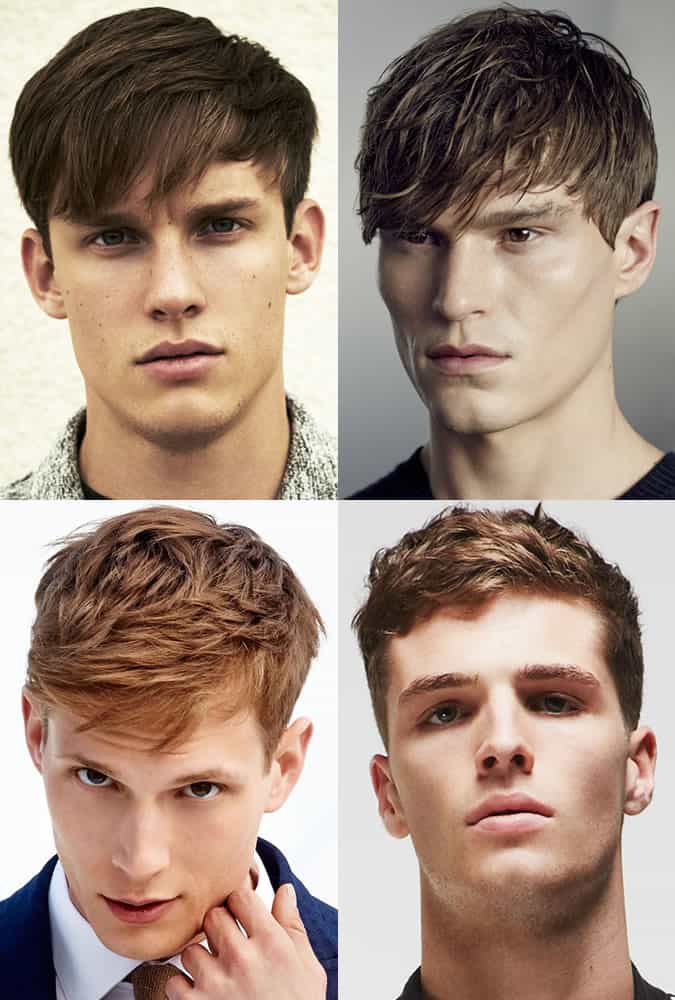
The French Crop
Daniel Davies, general manager at Pall Mall Barbers
“The
French crop suits most face shapes and is ideal for men going thinner
on top. Since you’re taking the hair forward slightly here, leaving
length in the fringe, it can help to cover any receding patches.
“It’s
a low maintenance, easy in-and-out style – perfect for someone in and
out of the gym or swimming pool – as you can wear it without styling
product, just letting it fall naturally into place.
“If, however,
you do want to use product, try a little hairspray [and not a drop of
anything more], as the French crop is a style that’s meant to be left
natural. The upkeep with this cut isn’t in styling but in making a point
of getting it trimmed every three or so weeks.”

The Buzz Cut
Brent Pankhurst, founder of barbershop and grooming
brand Pankhurst London
“The
buzz cut is a timeless style. But to really make it work, you need to
have a great shaped head [a noggin like Ryan Gosling’s or Christian
Bale’s, for example].
While buzz cuts achieved using clippers all
over suit classically masculine, square and symmetrical face types,
Pankhurst suggests a slightly less severe alternative for those of us
not blessed with a square jaw and perfectly proportionate head:
“Go
for a shape that is slightly square over all [clippered at the sides],
with a little more length on the top. Scissor over comb is the Pankhurst
technique and I’d highly recommend you make sure your barber uses
scissor over comb rather than clippers exclusively. By cutting, you can
work with the shape of the head to make the overall cut more flattering.
“A
good barber will take everything he knows about you into account, from
your personality to your style to your day-to-day living, to provide a
cut that suits you. Remember you wear your haircut 24/7 so it needs to
work for all scenarios.
“To style, try a little moulding cream to give your cropped style some finish.”
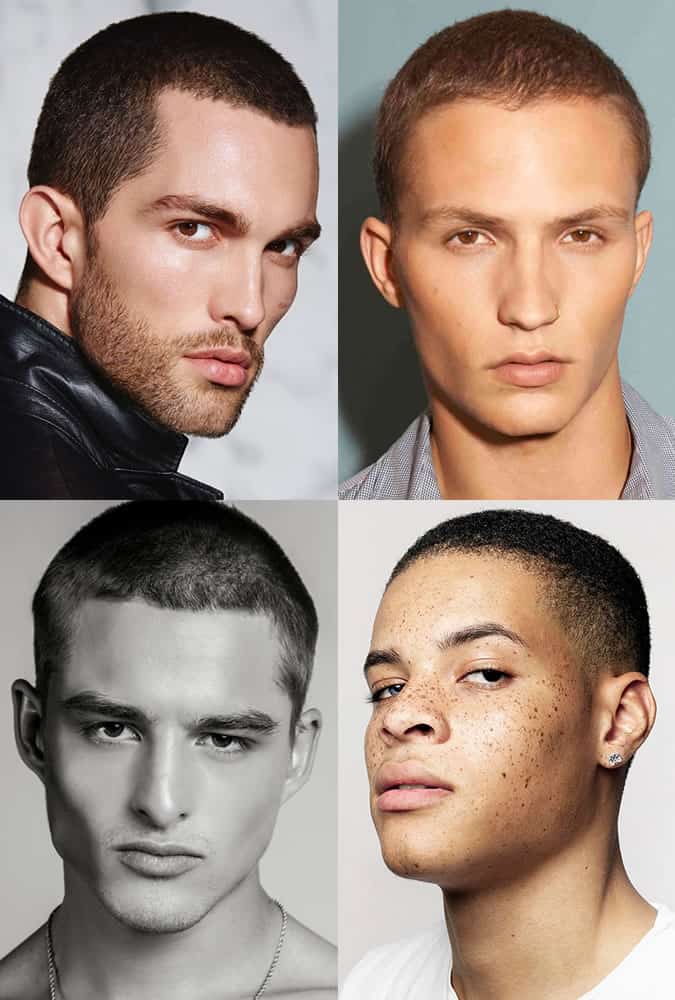
The Slick Back
Joe Parker, barber at Ruffians Covent Garden
“The
modern slick back first made an impact in the 1920s. At the time, it
was useful to have a hairstyle that wouldn’t be messed up when wearing a
hat (a status symbol and indicator of one’s class around the early 20th
century). Since then, it has become a timeless classic.
“Straight
hair is best for this – the more curl you have, the harder it is to
slick back properly. As for what face shape suits this style, it’s
pretty versatile, as it will allow facial features (like beards,
moustaches) to be more prominent, with the hair essentially framing the
face. Unfortunately, for those with a receding hairline, the slick back
look won’t be ideal as it’ll make recession far more prominent.
“The
back and sides need to be tapered, natural and fairly tight, with a
graduation up to the slightly heavier top. If you’re going for an
undercut, there needs to be a disconnection here, but blending would be a
better option for finer hair.
“To style, blow-dry the hair back
(if you have hair that grows forward, this will take longer) – bear in
mind it takes practice to do this effectively. For a traditional slick
look, use a water-based pomade and comb through when damp, or try a matte paste for a softer, more contemporary finish.”
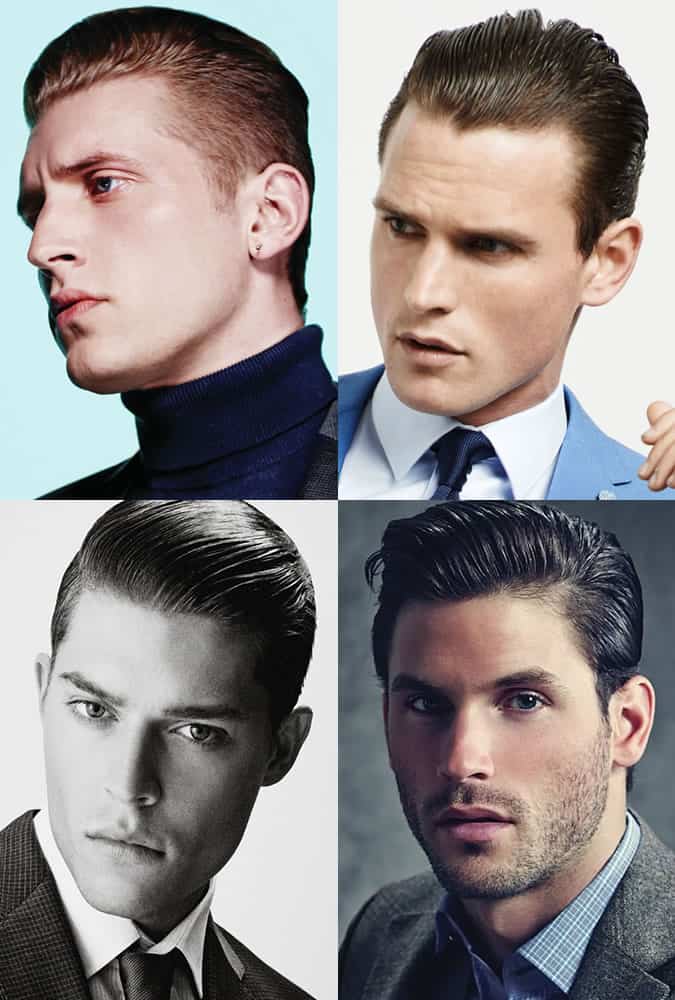
The Side Parting
Joe Parker, barber at Ruffians Covent Garden
“Particularly
popular from the 1920s-1940s and again in the 1960s, this style has
been revived in the last decade as an easier-to-achieve alternative to
the slick back.
“As the basis of the haircut is a simple short
back and sides, the style is pretty versatile and will suit most hair
types and face shapes. That said, this can run the risk of looking like a
comb-over if hair is too long and thin on top – definitely not a good
look – so bear that in mind before your cut.
“Ask for a classic
taper on the back and sides, and for the top to be left long enough to
part, but short enough to be neat and tidy.
“The styling product you should use depends on your hair density: those with thicker hair should try a paste, while a matte clay works best for finer, less dense hair types.
“Actually
parting the hair can be tricky; the best approach is to put the product
in the hair when damp (not wet) and part using a comb. You should try
to establish where the natural parting is, perhaps with the help of your
barber initially.
“If you’re struggling, comb the hair backwards
and you’ll see where it starts to fall and separate. Rub the styling
product into your hands, distribute evenly throughout the hair and then
apply a setting spray if you’ve got really unruly hair.”
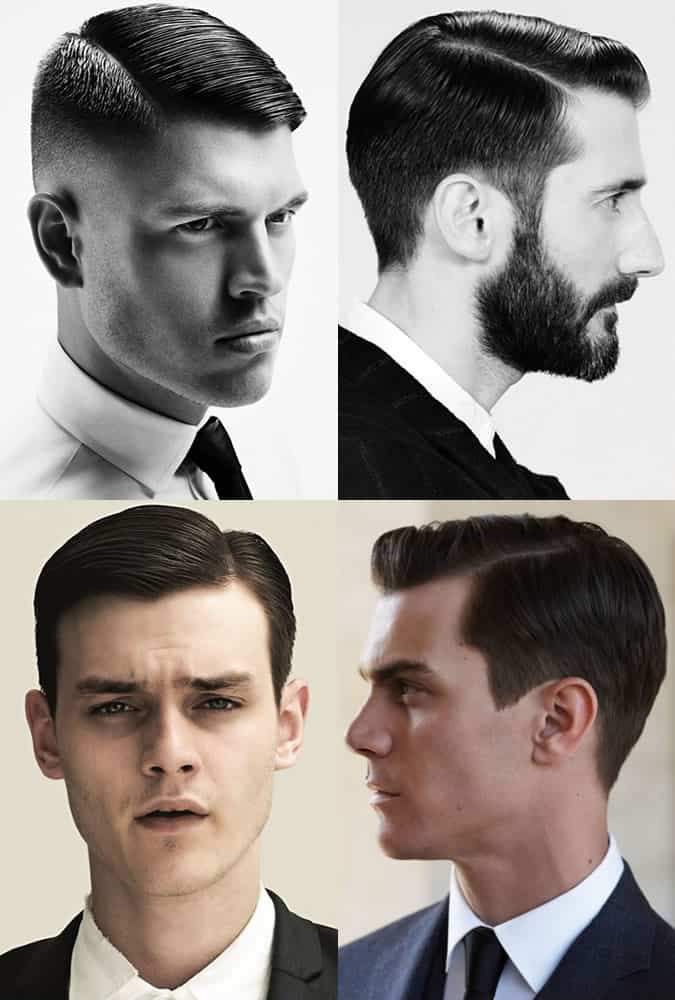
The Shoulder Length Cut
Jamie Stevens, celebrity hairstylist
“Classic
and refined, this style has featured in fashion for years, versatile
enough to be adapted to several situations. By keeping your hair longer
and having your barber or stylist add in some layers, you can just as
easily have a beach-ready textured look as a Gordon Gecko boardroom
look.
“Probably the toughest part of achieving this style is
growing your hair – and if you’re having difficulty, persevere. There
will always be a day when you can’t stand it and want to cut it all off
but – before making any rash decisions – try setting a goal length and
make a decision once your hair’s grown to that length on whether or not
you want to stick with it.
“When it comes to getting your hair
cut, take time to discuss with your barber or stylist, making sure you
mention what your limitations are. There’s no point having a messy,
choppy layered look when you have to appear smart and put together for
work.
“The success of this style is dependent on hair texture.
Very straight hair won’t stay in place as easy as hair that has a subtle
wave; equally, excessively curly hair will be difficult to keep
smoothed out.
“By consulting with your barber or stylist about
your options, you’ll discover that there’s always a way to cater to your
particular needs. For example, a loose perm (it’s moved on a lot since
Kevin Keegan) might be the solution for straight hair, while a
texturiser could soften very curly hair and make it more manageable.
“Keep
styling products to a minimum as this style is at its strongest when it
looks completely natural. With that said, you could try some salt spray
to add softness for a messier take, or apply some Matrix Shape Switcher
if you’re trying to tame waves or curls.”
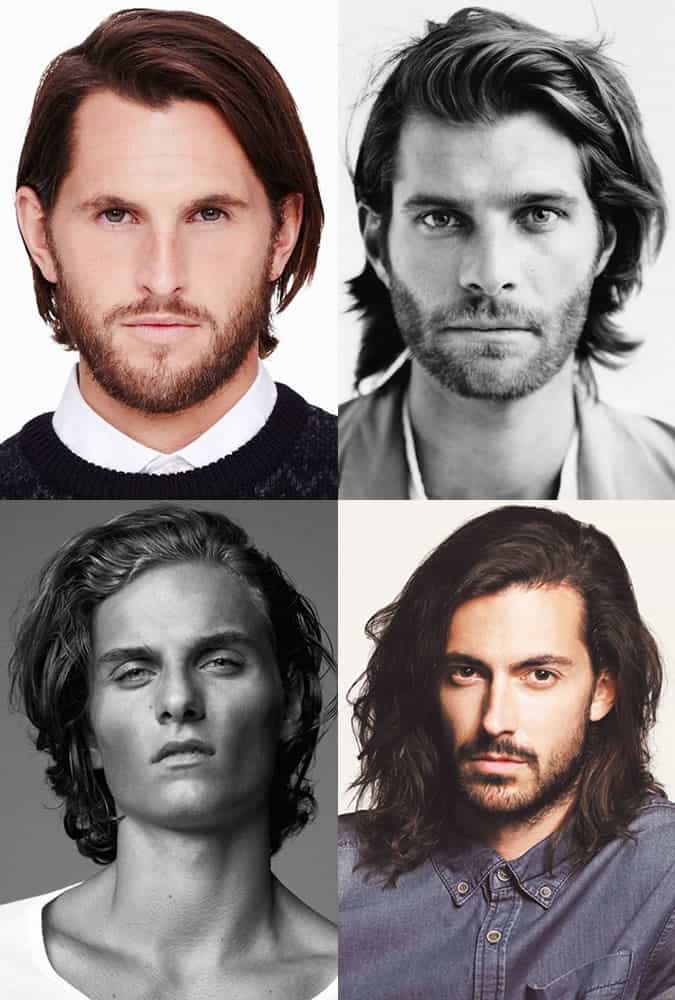
The Shaped Afro/Modern Hi-Top Fade
Jamie Stevens, celebrity hairstylist
“Two
words: Will Smith. The Fresh Prince paved the way for the popularity of
the shaped afro, giving rise to variations and interpretations like
this alternative take on the classic hi-top fade.
“This isn’t the
most versatile look as it’s designed to stay in the shape that it’s been
cut, so there’s not much room to change it up. Also, afro or extremely
curly hair is essential.
“Before your cut, make sure you take time
to discuss with your barber or stylist the degree to which you want the
shape of your afro to point out; getting this part right is crucial so
that you can brush it into shape easily.
“There are so many
different variations on this style so it might be worth taking some
images of styles you like with you to your haircut. Guys often feel
embarrassed taking pictures with them but the more insight the person
cutting your hair has, the better.
“Make sure you go to a stylist
or barber who knows how to work with your hair type and get yourself
proper tools like an afro comb to style.”
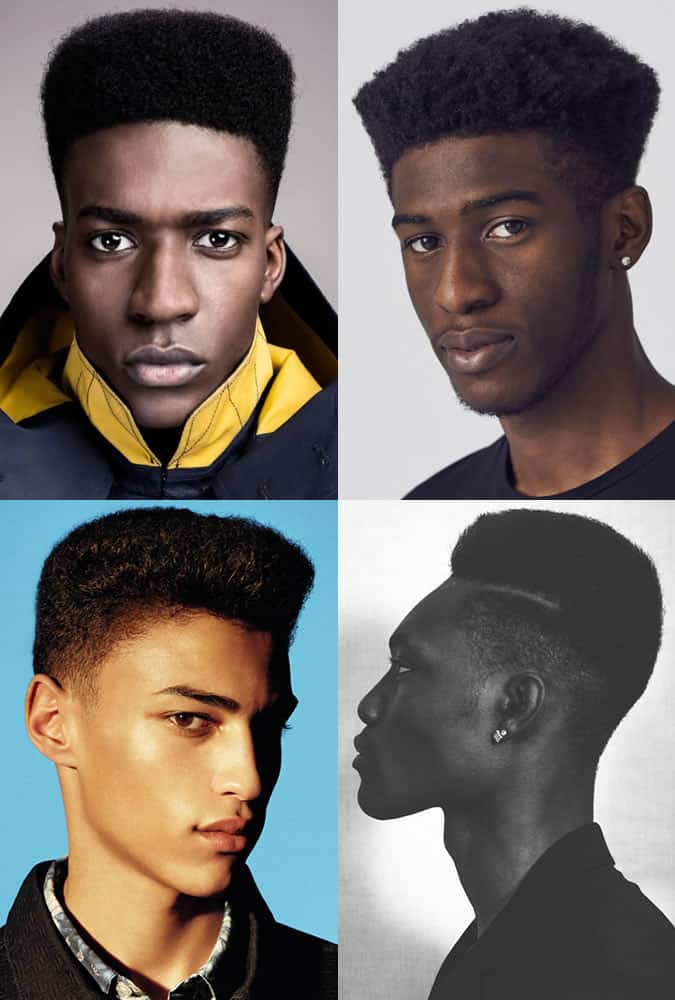
The Pompadour
Alex Glover, master barber at Murdock at Liberty, London
“The
pompadour has been popular in many different lengths and variations
since its original debut, on Madame du Pompadour, chief mistress to the
French King Louis XV in the 1750s. Initially a feminine style in which
all the hair was pinned up onto the top of the head to create height and
drama – the style has morphed over hundreds of years into the wearable
styles pictured below. A hairstyle with hundreds of years of history?
You can’t get more classic than that.
“The pompadour works for
most but does require some degree of thickness to the hair so that the
style can support itself once created. Additionally, different face
shapes can be flattered by varying the style’s structure. For example,
if you have a narrow face shape, you could wear your pompadour wider and
softer, or if you have a round face, it’s worth slicking the hair at
the sides of your head right down to slim the overall silhouette.
“To
get this style, you’ll need to start by growing the front out bit by
bit – get your barber or stylist to cut in a graduated top for you.
Then, each time you have your hair trimmed the graduation should be
altered slightly to retain all the length at the front, while keeping
the back shorter.
“Once you’ve grown three inches of hair at the
front, you’ll be able to create height when you style your pompadour by
using a hairdryer and a mousse or salt spray. Pull the hair up as you
dry it to create rootlift. Once nearly dry, use your fingertips, or a
round/Denman hairbrush to give the ends some movement, allowing the
style to be pushed back on itself.
“It’s worth experimenting with
products to find the best fit but avoid overloading your hair with
product in one fell swoop. Add your product to the back and sides before
working through the top – remember you can always add a little more in,
but you can’t take any out without washing.
“Finally, groom into
place [using hairspray for hold] for your chosen finish – whether an
Elvis-inspired greaser style or a more James Dean-esque dishevelled
take.”

The Quiff
Dion Padan, FashionBeans resident hair expert
“A
less polished alternative to the pompadour, the quiff is an iconic
style that suits a wide range of ages, face shapes and personal styles.
Like the pompadour, though, the quiff isn’t best suited to those with
receding hairlines as it exposes the forehead.
“Before your cut,
make sure you’ve decided whether a classic or contemporary take on the
quiff works best for you (with the help of your barber or stylist, of
course). The classic quiff features a softer back and sides which are
kept short, but not severely so. The contemporary take, however, can
feature a dramatic contrast between long hair at the top of the head and
a tightly clippered back and sides, producing a ‘disconnected’ effect.
Note: the longer your hair, the longer it takes to style.
“Face
type is also important: since the quiff offers natural volume, it’s best
not to take the hair at the sides and back too short if you have a long
face.
“To style, apply a wet styling product to towel dried hair
and comb through to evenly distribute. Then, blow-dry the hair using a
hair dryer set to the highest temperature setting and the lowest speed,
while simultaneously using a vented brush to sweep the hair into your
preferred shape.
“Remember to finish off with a strong hold hairspray to make sure your efforts don’t go instantly to waste!”
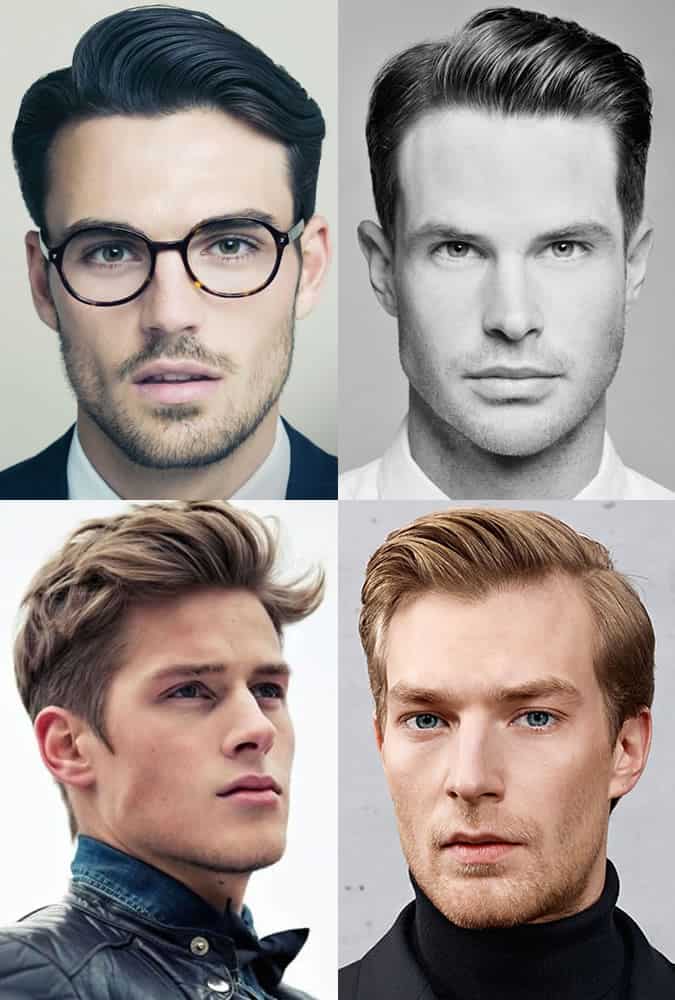



No comments:
Post a Comment